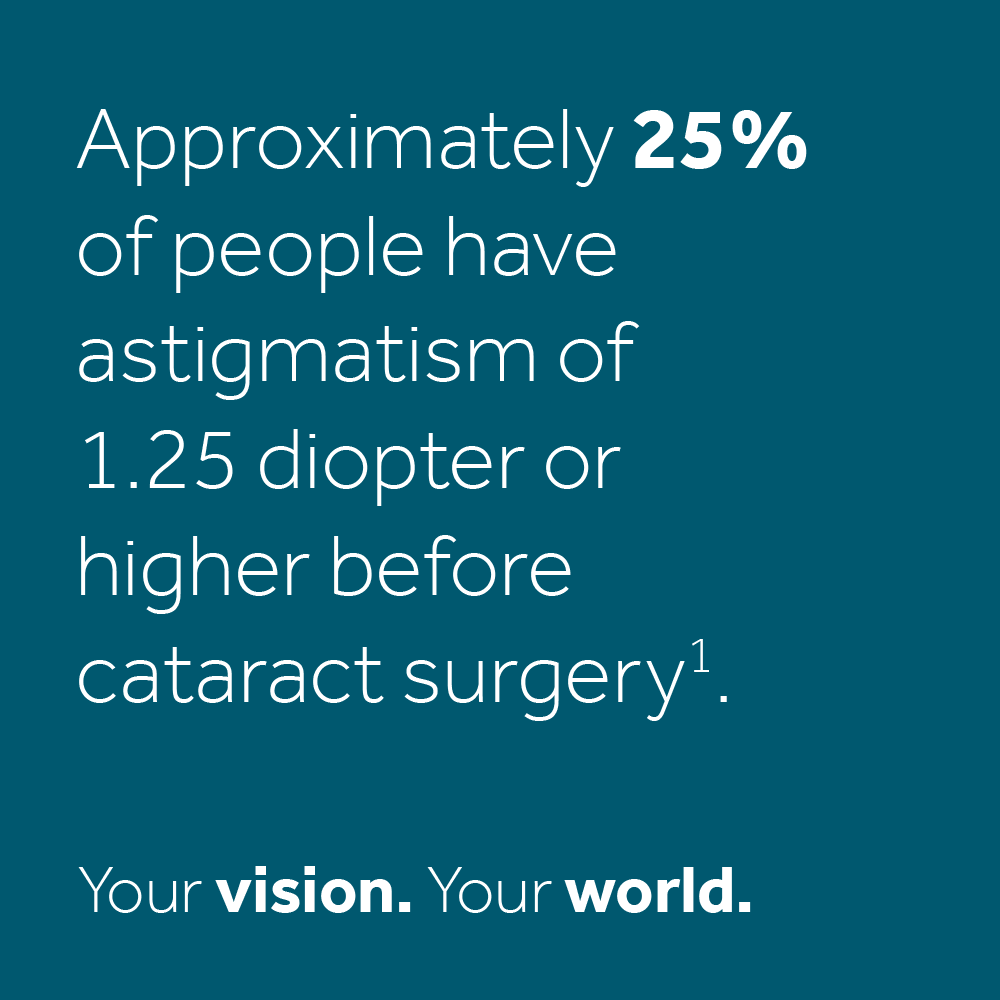What is astigmatism?
Astigmatism is an imperfection in the curvature of the cornea resulting in distorted or blurred vision at all distances. The condition is very common and occurs when the shape of the cornea is not spherical or regular. Simply, the curvature of the cornea can be described as the curvature of an American football which is varied over the surface instead of having a constant radius like the curve of a basketball.
If the corneal curvature is irregular, the light entering the eye is not correctly received by the retina, causing blurred and distorted vision, regardless of the distance at which the objects are located2.
Vision lacks precision and it is difficult to distinguish clearly between certain shapes and details.
Astigmatism is usually accompanied by myopia (near-sightedness, when close objects look clear but distant objects appear blurred) or hyperopia (far-sightedness, when distance objects look clear, but close objects appear blurred).

- Warren E. Hill, MD. Keratometry database
- https://www.aao.org/eye-health/diseases/what-is-astigmatism
Vision with healthy eyes

Vision with astigmatism

How is astigmatism treated?
Astigmatism can be treated in several ways. Glasses and contact lenses can correct your refractive error caused by astigmatism, but once the condition is stabilized in adulthood then your eye surgeon may suggest a surgical procedure.
Surgical procedures that your surgeon recommends may include a limbal relaxing incision to help stabilize your cornea or correction through the use of a femtosecond laser, both services of which can be partnered with a Rayner intraocular lens to improve your vision.

Speak to your eye surgeon to discuss the best way to treat astigmatism, if required.





